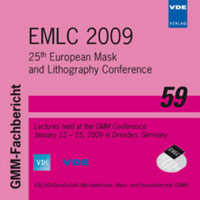Increasing inspection equipment productivity by utilizing Factory Automation SW on TeraScan 5XX systems
Conference: EMLC 2009 - 25th European Mask and Lithography Conference
01/12/2009 - 01/15/2009 at Dresden, Germany
Proceedings: EMLC 2009
Pages: 10Language: englishTyp: PDF
Personal VDE Members are entitled to a 10% discount on this title
Authors:
Jakubski, Thomas; Piechocinski, Michal; Moses, Raphael (Advanced Mask Technologies Center, Raehnitzer Allee 9, 01109 Dresden, Germany)
Bugata, Bharathi; Schmalfuss, Heiko (KLA-Tencor Corporation. 160 Rio Robles, San Jose, California 95134, United States)
Köhler, Ines; Lisowski, Jan; Klobes, Jens; Fenske, Robert (SYSTEMA Systementwicklung Dipl.-Inf. Manfred Austen GmbH, Manfred-von-Ardenne-Ring 6, Dresden, Germany)
Abstract:
Especially for advanced masks the reticle inspection operation is a very significant cost factor, since it is a time consuming process and inspection tools are becoming disproportionately expensive. Analyzing and categorizing historical equipment utilization times of the reticle inspection tools however showed a significant amount of time which can be classified as non productive. In order to reduce the inspection costs the equipment utilization needed to be improved. The main contributors to non productive time were analyzed and several use cases identified, where automation utilizing a SECS (SEMI Equipment Communications Standard) equipment interface was expected to help to reduce these non productive times. The paper demonstrates how real time access to equipment utilization data can be applied to better control manufacturing resources. Scenarios are presented where remote monitoring and control of the inspection equipment can be used to avoid setup errors or save inspection time by faster response to problem situations. Additionally a solution to the second important need, the maximization of tool utilization in cases where not all of the intended functions are available, is explained. Both the models and the software implementation are briefly explained. For automation of the so called inspection strategy a new approach which allows separation of the business rules from the automation infrastructure was chosen. Initial results of inspection equipment performance data tracked through the SECS interface are shown. Furthermore a system integration overview is presented and examples of how the inspection strategy rules are implemented and managed are given.


